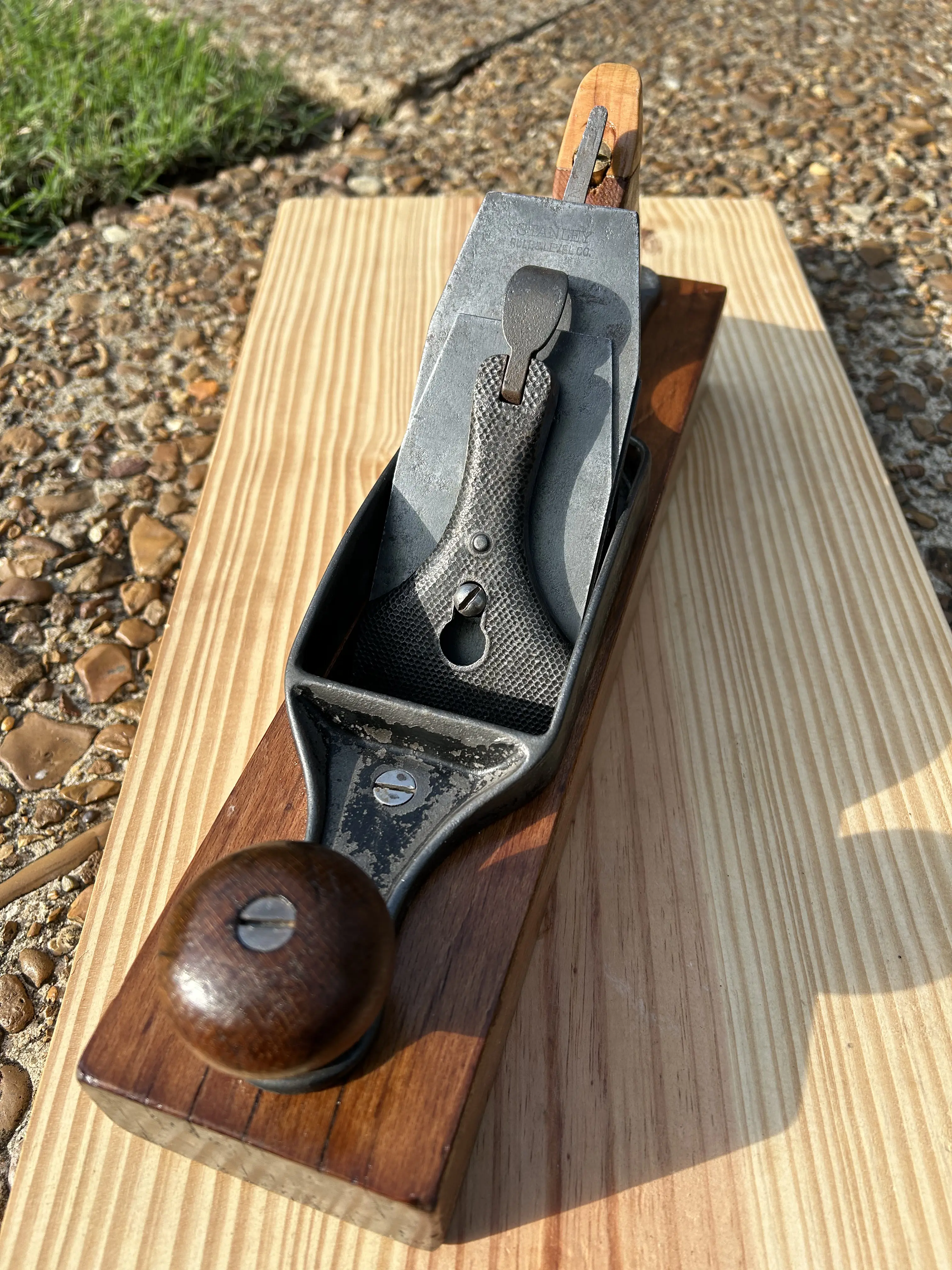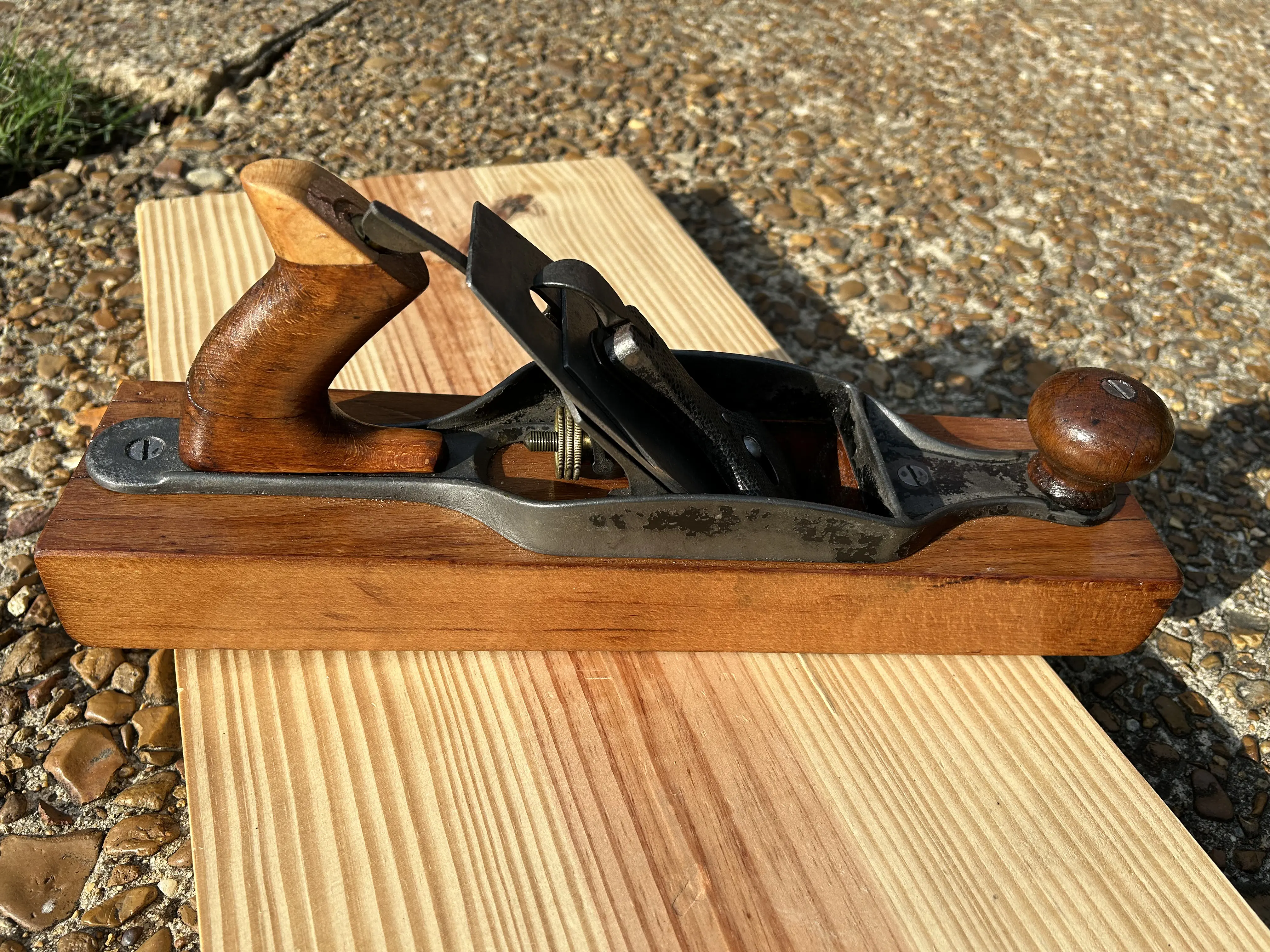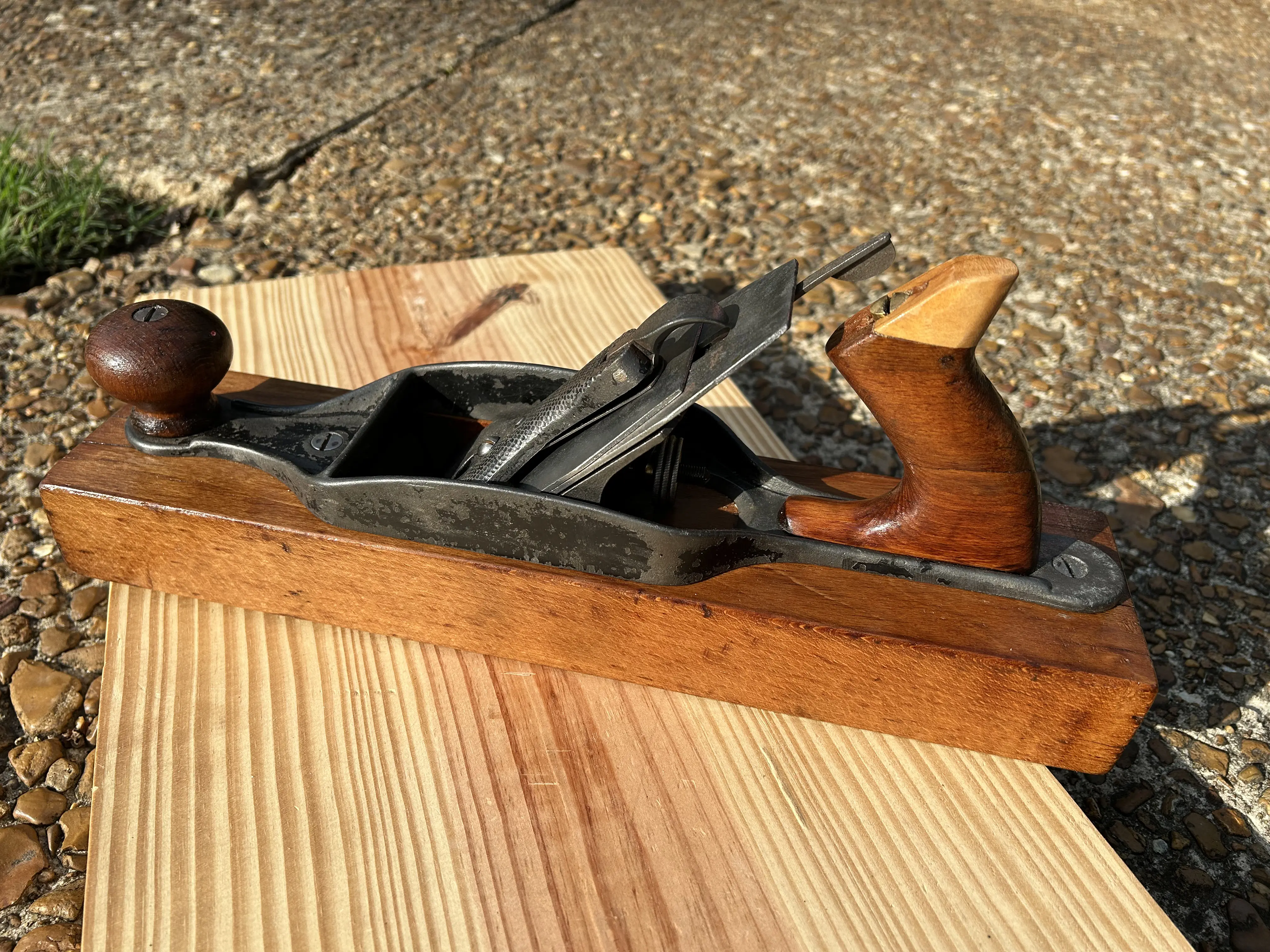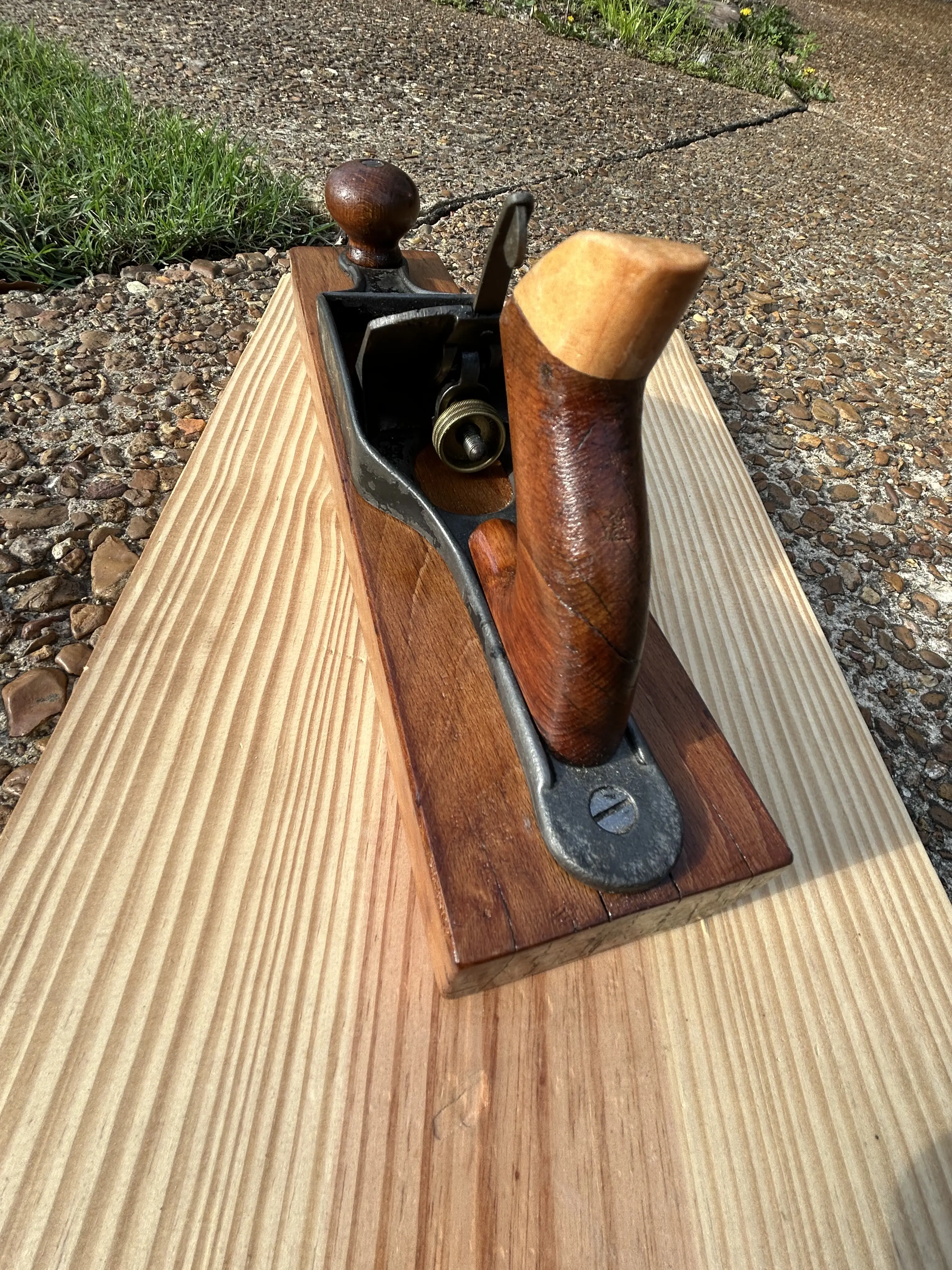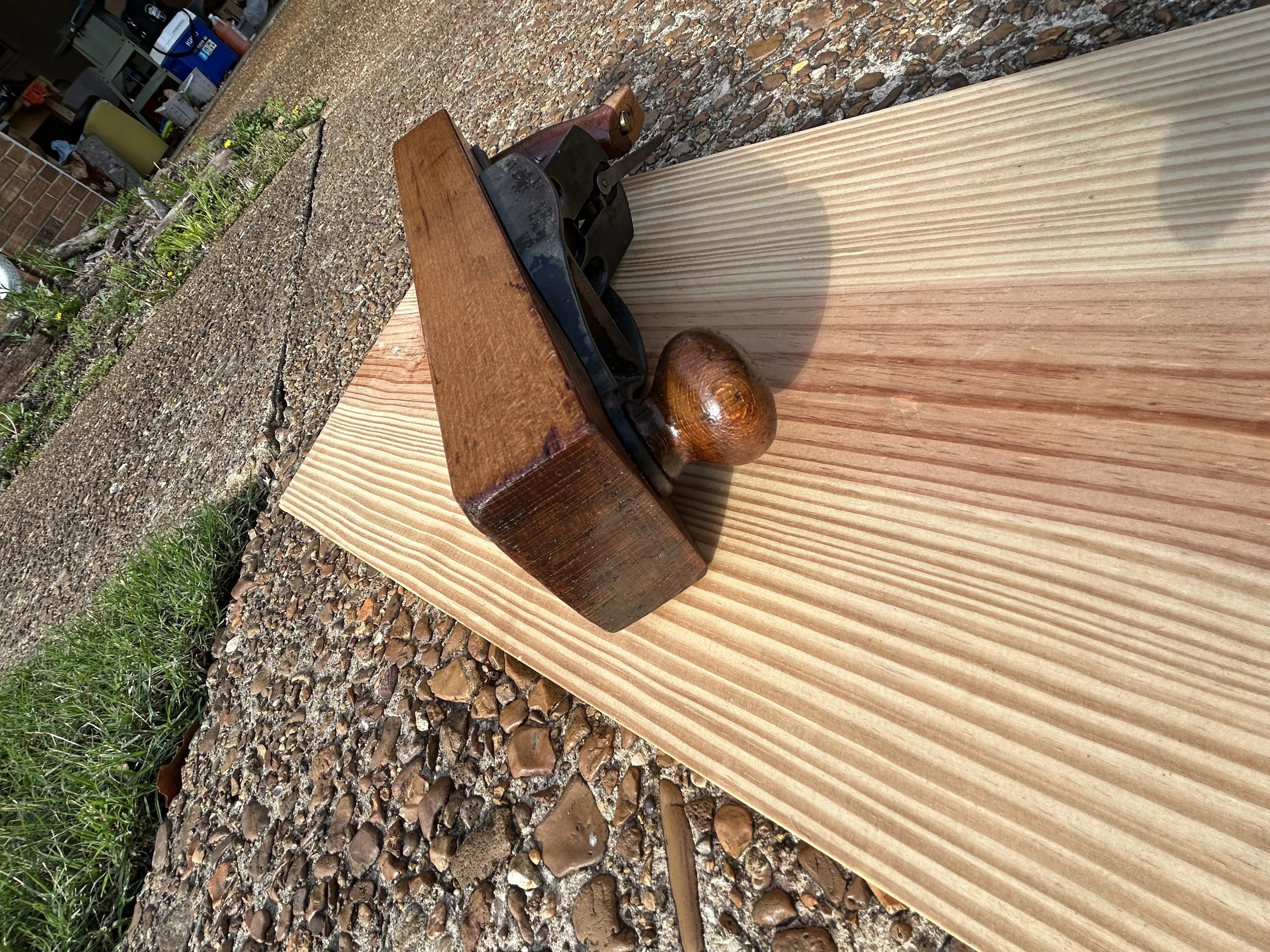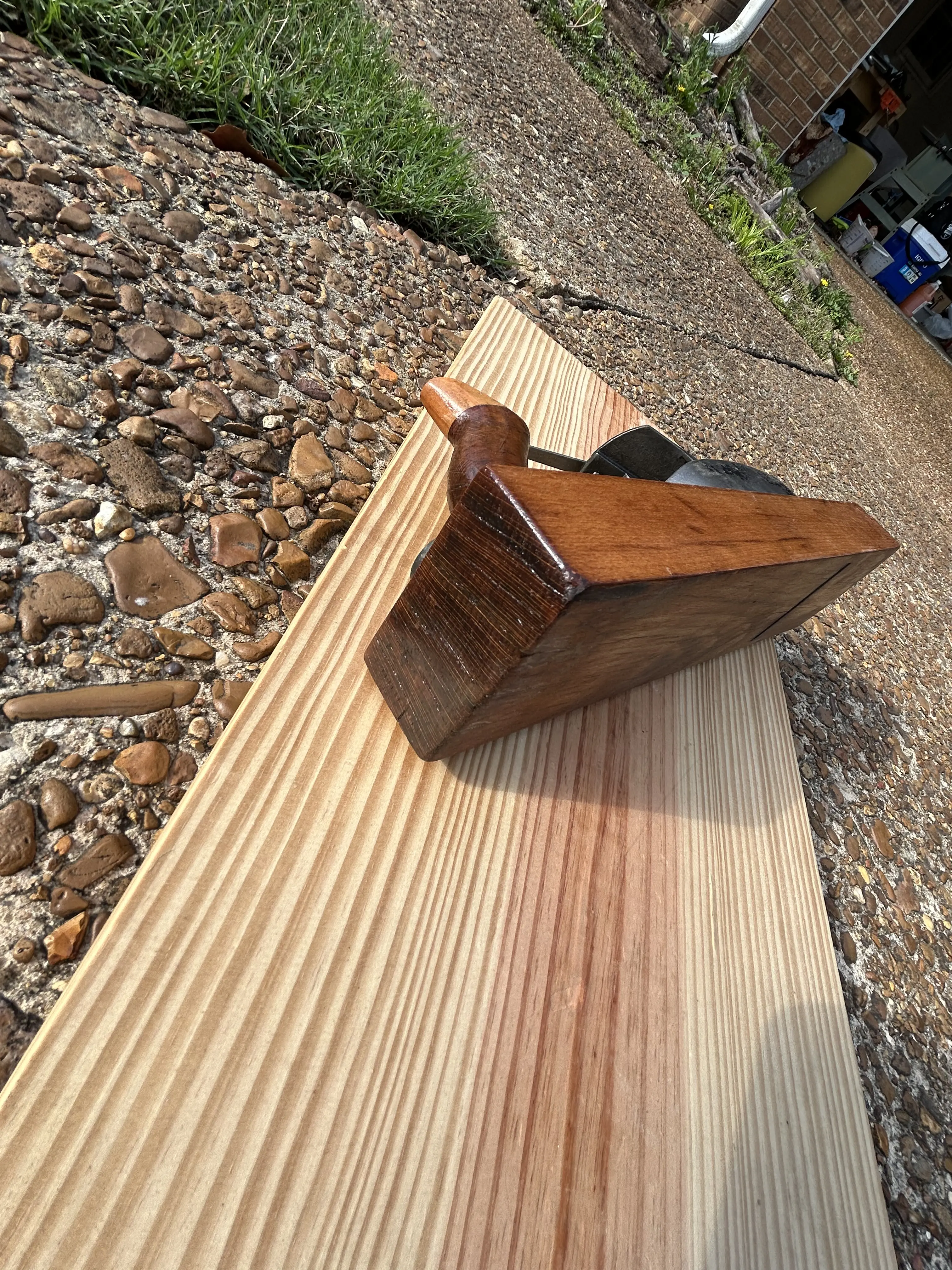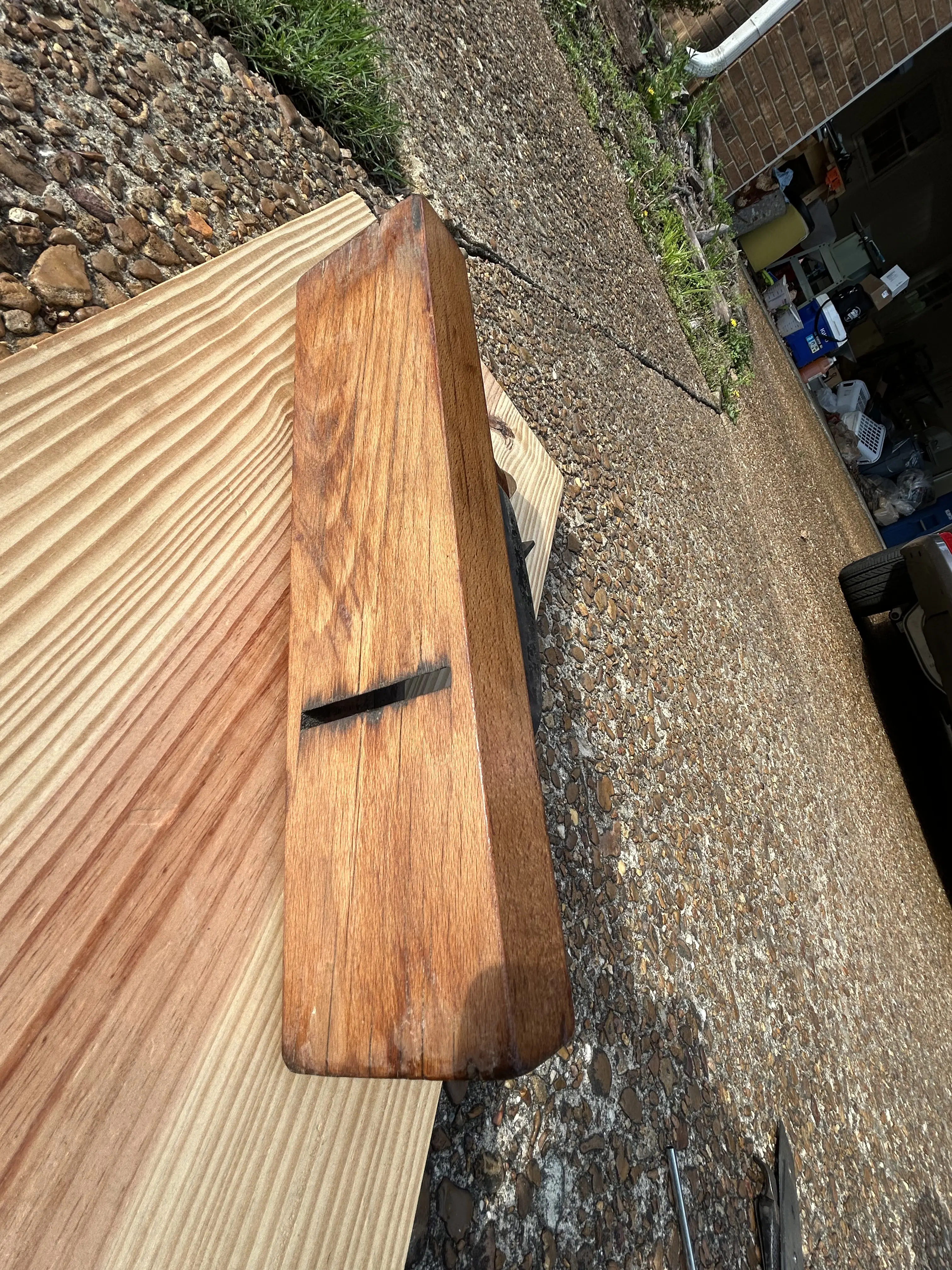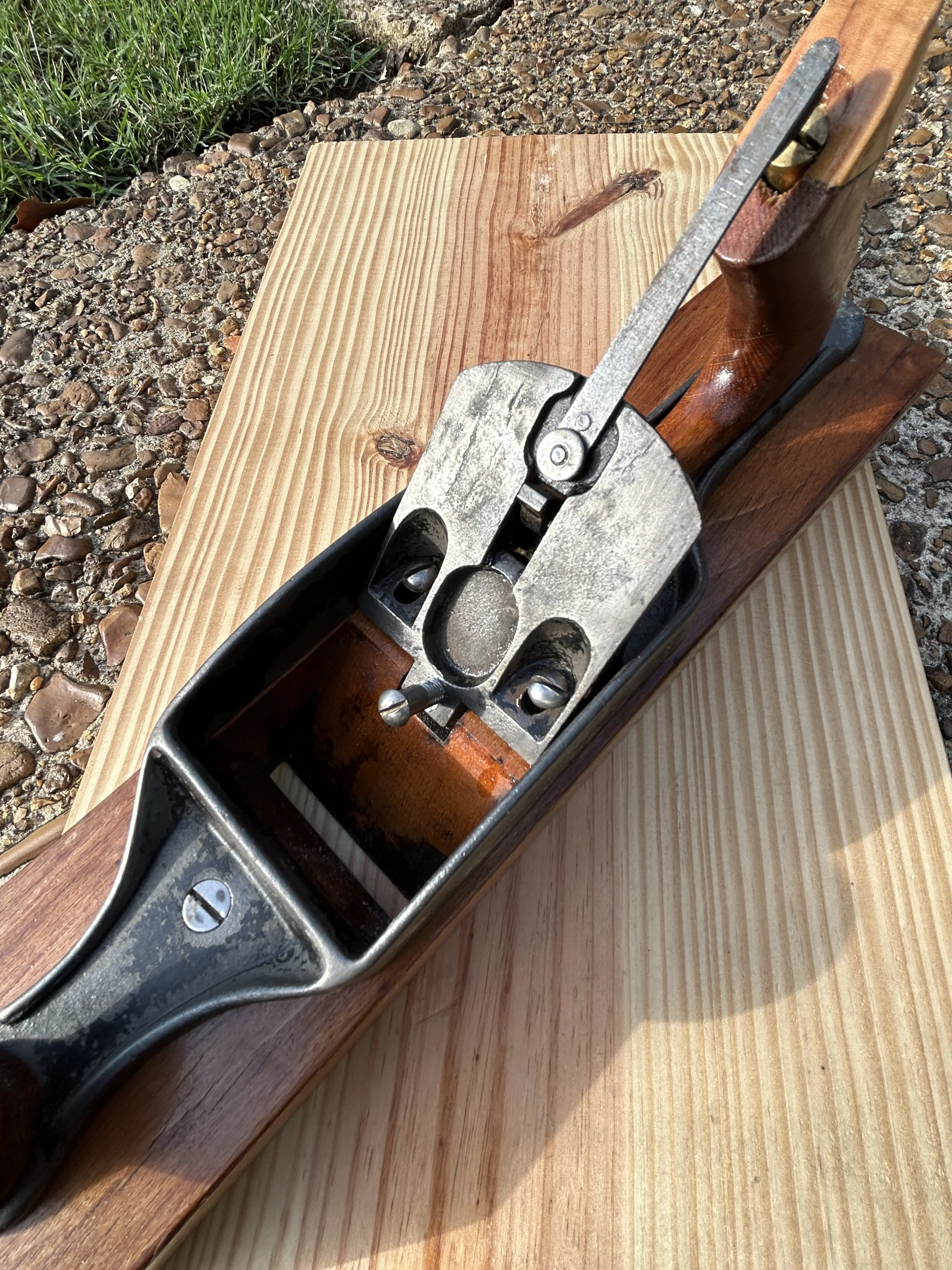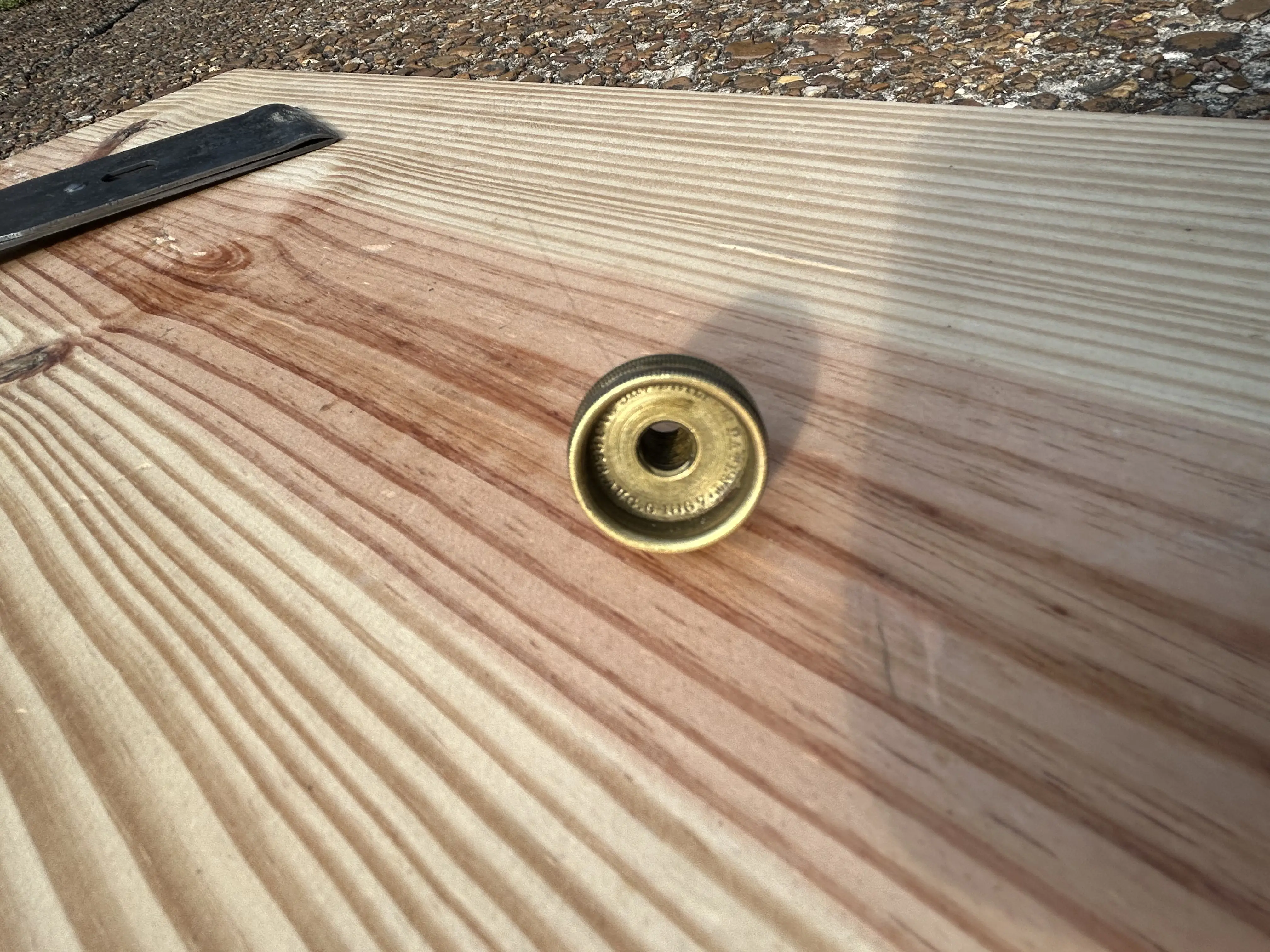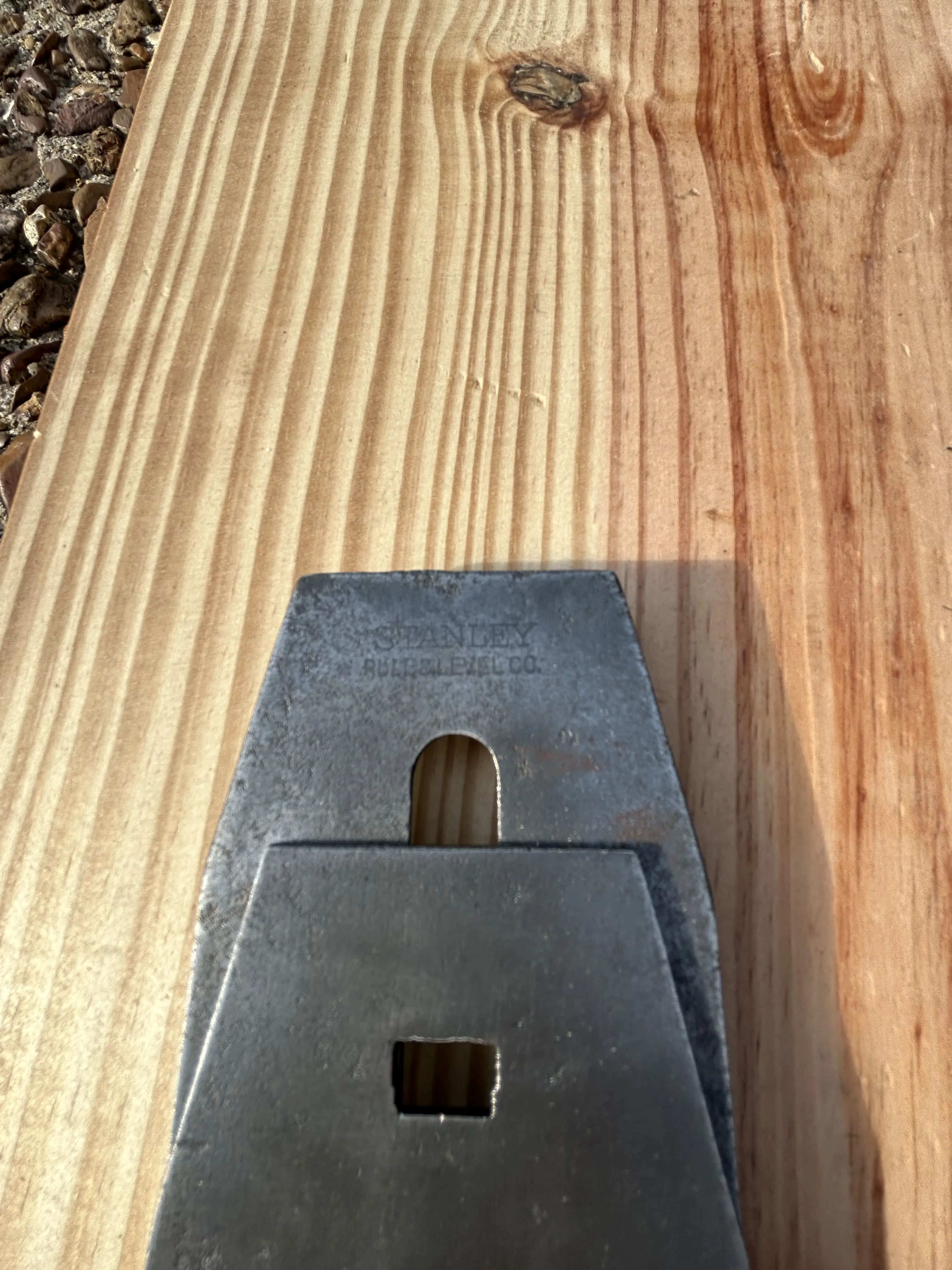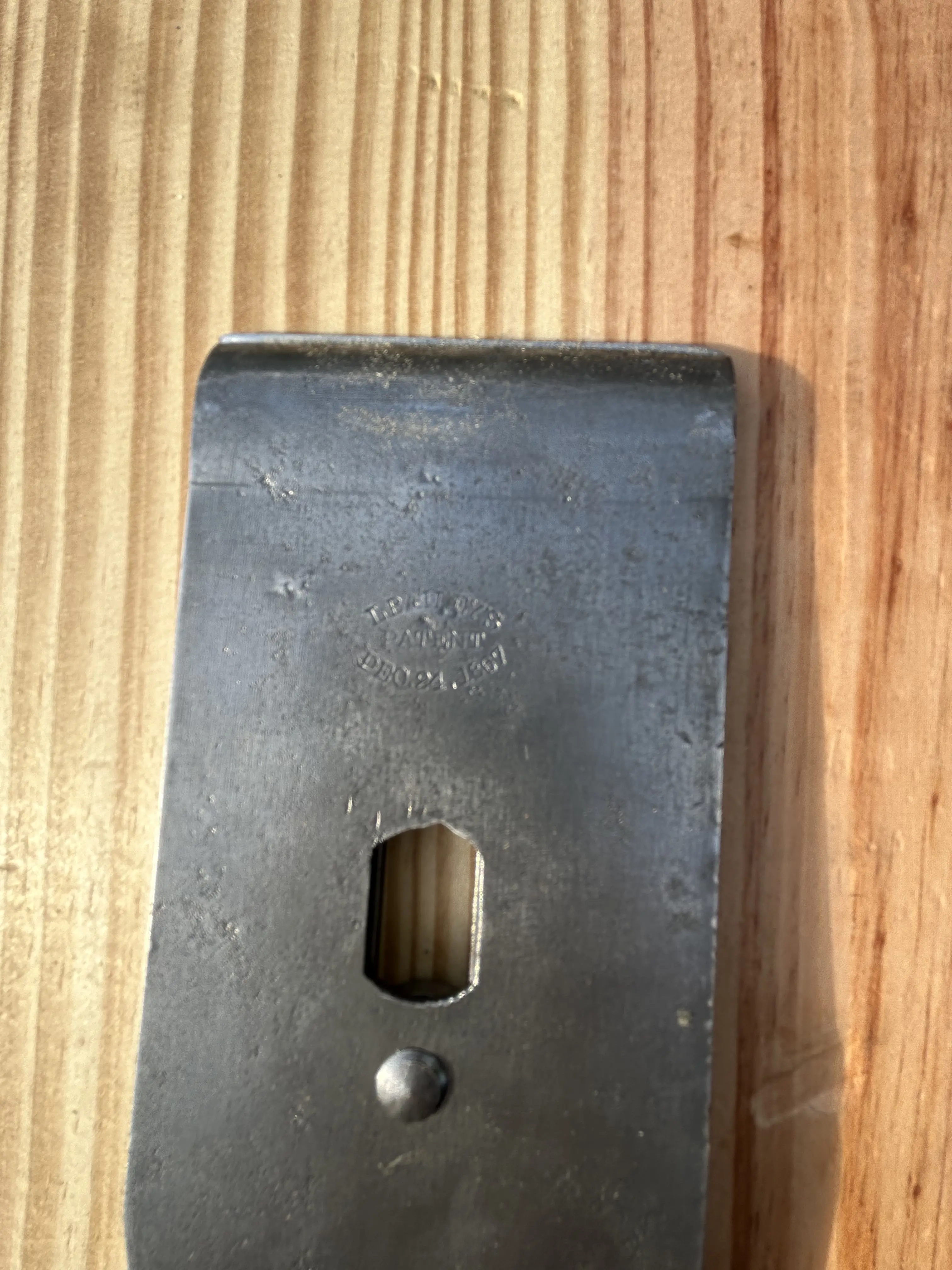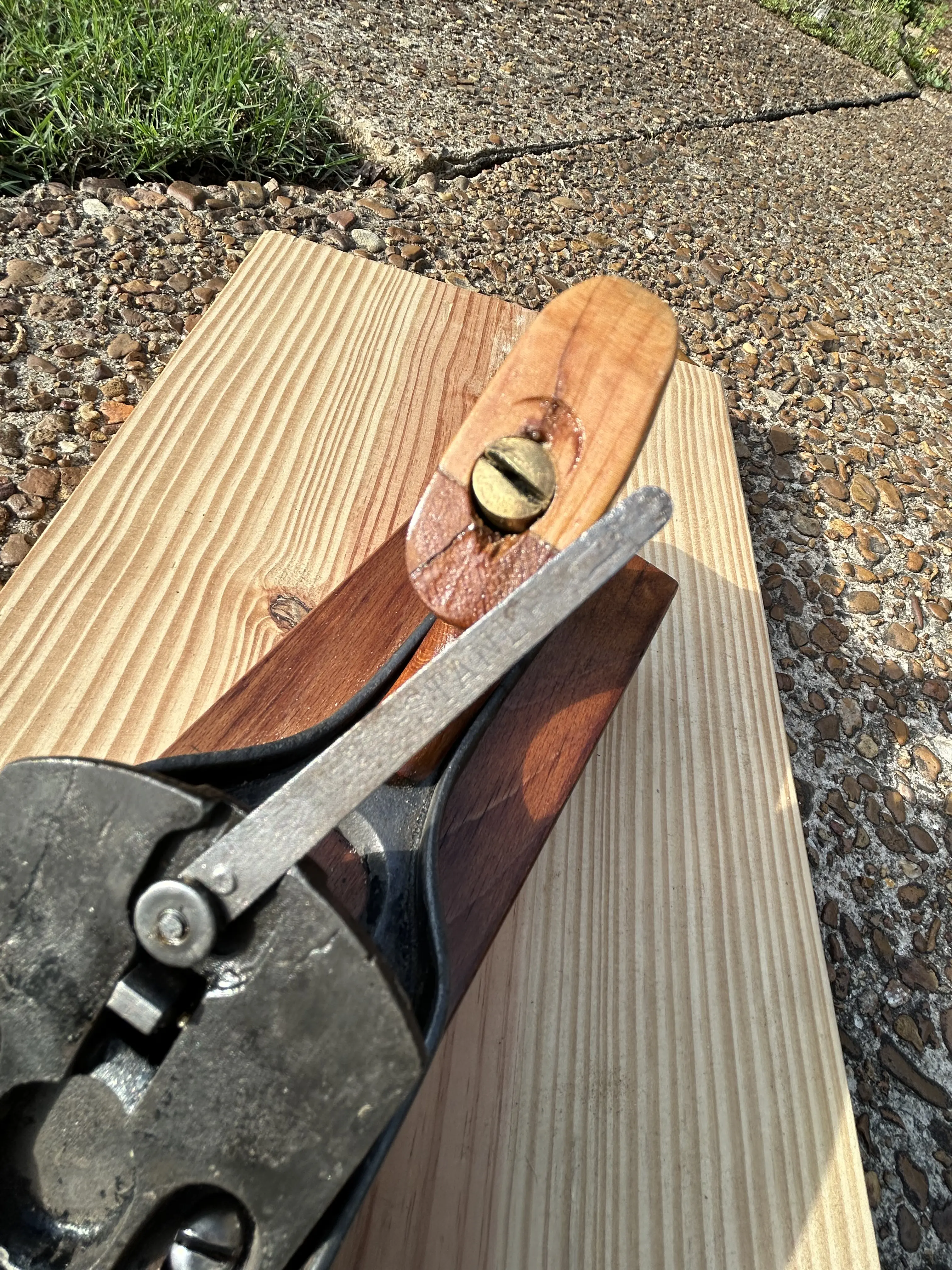This is a transitional plane that saw real use and has a kind of interesting history.
The cast iron, chip breaker, and adjustment knob are all pre-Stanley Bailey. So from somewhere in 1865-1869. The frog and blade were replaced with Stanley parts at some point.
The cast iron has lost almost all of its original Japanning, but I preserved what remained.
The tote was split and missing the top. I repaired the split and carved a piece of American beech to replace the top. I didn’t want to hide the repair in keeping with the original practical work. The grain was aligned to match. Both the front handle and the tote are the original rosewood.
There was cracking in the wooden body as is normal. I wanted to preserve that, but also leave it in a condition where it could be used. Cracks were filled with epoxy, and the mouth is completely usable at this point.
The sole is flat as is the frog and wood plane bed.
The wood surface was cleaned. The entire body was finished in boiled linseed oil, and the top and sides were re-varnished with shellac to replicate the original finish.
No chemicals were used in rust removal, just gentle laborious physical removal.
Just a fascinating piece of history. It’s not some plane that sat unused, but one employed practically by a woodworker over many years.
The blade and chip breaker will require fettling. I wanted to leave the choices involved up to the owner if they wanted to use it. If not, it makes a display piece as is.
There is a thin layer of hard wax on all metal parts to prevent rust. So it is a little tacky. That’s on purpose and not gunk.
It will be shipped disassembled to protect all parts from a box being kicked or thrown like a frisbee by disgruntled shipping employees.
I do highly recommend James Wright’s paste wax, particularly his hard wax.
